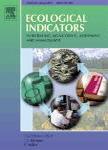版权所有:内蒙古大学图书馆 技术提供:维普资讯• 智图
内蒙古自治区呼和浩特市赛罕区大学西街235号 邮编: 010021

作者机构:South China Normal Univ Sch Geog Guangzhou 510631 Peoples R China Minist Nat Resources Key Lab Nat Resources Monitoring Trop & Subtrop Ar Guangzhou 510631 Peoples R China South China Normal Univ Beidou Res Inst Foshan 528225 Peoples R China
出 版 物:《ECOLOGICAL INDICATORS》 (生态指数)
年 卷 期:2024年第158卷
核心收录:
学科分类:0710[理学-生物学] 0830[工学-环境科学与工程(可授工学、理学、农学学位)] 07[理学] 09[农学] 0713[理学-生态学]
基 金:National Natural Science Foun-dation of China Marine Economy Development Foundation of Guangdong Province [ 21] Guangdong Provincial Science and Technology plan project [2021B1212100003]
主 题:Urban renewal Urban waterlogging prevention Impervious surface optimization Multiobjective genetic algorithm Hydrological model Multiple linear programming
摘 要:The expansion of impervious surfaces during urbanization, as well as the irrationality of their spatial layout, is one of the main causes of urban waterlogging. Optimizing the spatial layout of impervious surfaces through urban renewal is important for urban waterlogging prevention. The differences in hydrological conditions among different hydrological units affect the optimization efficiency of the spatial layout of impervious surfaces in different hydrological units. Therefore, this study proposes an effective optimization model for impervious surface spatial layout, employing a hybrid approach that couples the Soil Conservation Service Curve Number (SCS-CN) model, nondominated sorting genetic algorithm 2 (NSGA2), and multiple linear programming (MLP) algorithm. This approach is applied in a case study of Guangzhou, China. The results show that (1) compared to the MLP-SCS model, the enhanced model not only provides reduced runoff coefficients but also achieves a better spatial balance of the retention water volume. (2) Compared to the conditions before optimization, medium- and high -density impervious surfaces significantly change after optimization, and the connectivity between patches is reduced. The optimized layout alters the original gradient connection method, preventing the aggregation of runoff from high -density impervious surfaces and thereby reducing the risk of urban waterlogging during heavy rain. This study can provide a reference for optimizing the spatial layout of impervious surfaces aimed at urban waterlogging prevention in urban renewal planning.